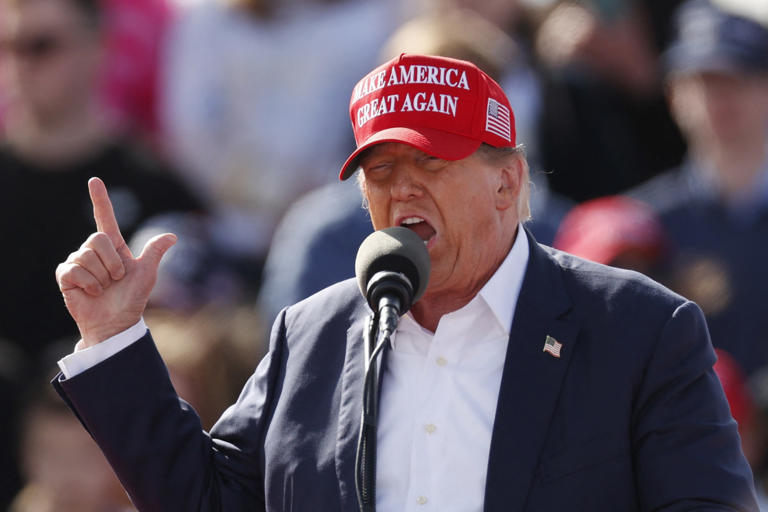In considering the potential impact of a Donald Trump presidency on interest rates and the broader economy, it’s crucial to delve into the historical context and the likely policy shifts that could unfold under such a scenario. Donald Trump’s previous tenure as president, spanning from 2017 to 2021, offers valuable insights into how his policies and economic approach influenced interest rates and financial markets.
During Trump’s first term, the trajectory of interest rates was significantly influenced by his administration’s economic policies. Early on, his administration pursued a pro-growth agenda that included substantial tax cuts aimed at stimulating business investment and consumer spending. These measures were complemented by efforts to roll back regulations across various sectors, which were seen as barriers to economic expansion. The overarching goal was to foster a robust economic environment that could generate higher employment levels and accelerate economic growth.
In response to these fiscal measures, the Federal Reserve initially maintained an accommodative monetary policy stance. This involved keeping short-term interest rates low and implementing quantitative easing programs to ensure adequate liquidity in financial markets. The combination of fiscal stimulus and accommodative monetary policy contributed to a period of economic expansion and relatively low interest rates during the early years of Trump’s presidency.
However, as the economic landscape evolved, signs of inflationary pressures began to emerge. Factors such as disruptions in global supply chains, rising commodity prices, and increased government spending to combat the economic impacts of the COVID-19 pandemic contributed to heightened inflation expectations. Inflation, a key determinant of interest rate policy, prompted the Federal Reserve to gradually shift its stance from accommodative to more restrictive.
Starting in March 2022, the Federal Reserve embarked on a series of interest rate hikes aimed at preemptively addressing inflationary pressures. These rate increases continued until July 2023, when the Fed paused its tightening cycle, leaving the yield on the 10-year Treasury note at 4.48%. This period marked a pivot in monetary policy as the Fed sought to balance economic growth with the need to contain inflation.
Looking ahead to the potential return of Trump to the presidency, several critical economic and policy considerations could shape the trajectory of interest rates:
- Federal Reserve Policy: The Federal Reserve’s response to economic conditions under a Trump administration would be pivotal. Currently, the U.S. economy is experiencing a slowdown in economic growth and moderating inflation. Analysts and market expectations suggest that the Fed may pivot towards lowering interest rates to support economic activity and employment. Futures markets indicate expectations of at least one rate cut by September 2024, with potential for additional cuts by year-end if economic conditions warrant.
- Impact of Trump’s Policy Agenda: Trump has outlined policies that could significantly impact economic variables such as inflation, growth, and trade. His stance on immigration, for instance, includes restrictive measures that could reduce the labor force participation rate and potentially lead to labor shortages in certain industries. This could influence productivity levels and overall economic output, factors that the Fed considers when setting interest rates. Additionally, Trump’s advocacy for protectionist trade policies and higher tariffs on imported goods could raise production costs for businesses, potentially leading to higher consumer prices and inflationary pressures.
- Yield Curve Dynamics: A Trump presidency could potentially result in a “steepening yield curve,” characterized by higher long-term interest rates and lower short-term rates. This scenario reflects market expectations of higher inflation over the long term and Federal Reserve actions to stabilize short-term rates. Investors and financial institutions might adjust their investment strategies to capitalize on this yield curve shape, favoring assets and strategies that benefit from higher long-term rates.
- Market Volatility and Investor Sentiment: Policy uncertainty under a new administration often leads to market volatility and shifts in investor sentiment. Financial markets react to policy announcements, economic data releases, and geopolitical developments, influencing asset prices and interest rate expectations. Investors typically adjust their portfolios in response to perceived risks and opportunities associated with changes in economic policies and market conditions.
In summary, the potential return of Donald Trump to the presidency could usher in a period of economic and financial market adjustment, particularly concerning interest rates. The Federal Reserve’s response to evolving economic conditions, coupled with Trump’s policy agenda and its implications for inflation, growth, and trade, will be critical determinants of interest rate movements. Investors and market participants will closely monitor developments, adapting their investment strategies to navigate potential opportunities and risks arising from changes in interest rates and broader economic conditions under a Trump administration.
